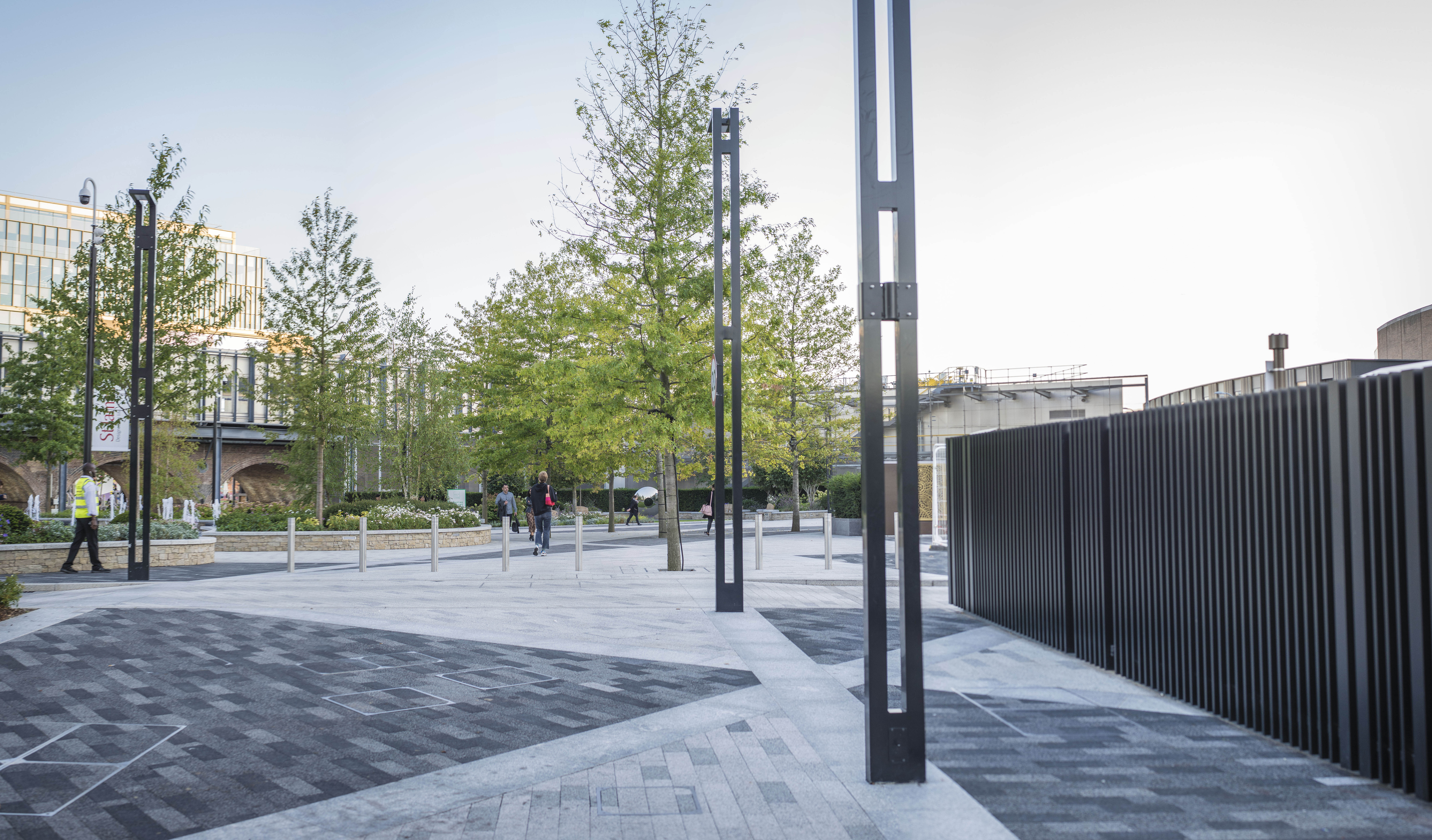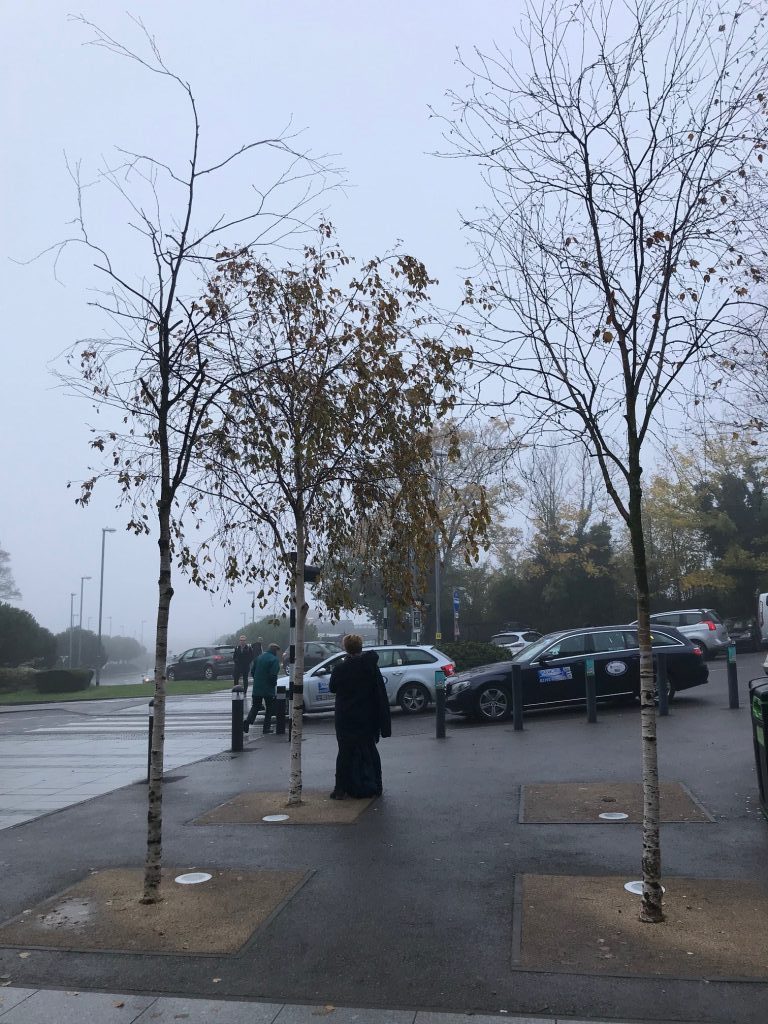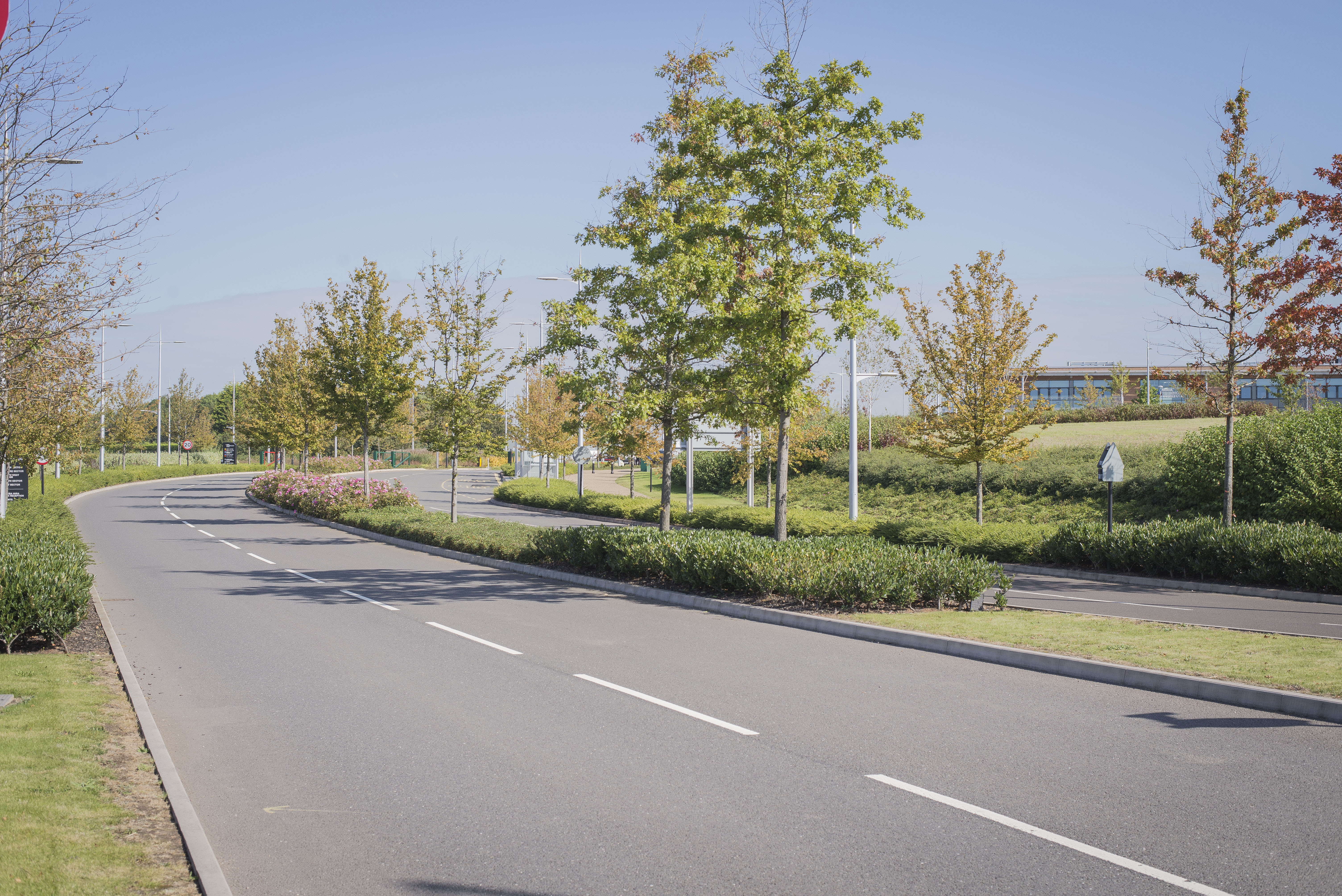We are all aware of the benefits of trees whether these are environmental, ecological or aesthetic. They benefit any space and improve the community and urban environment, providing important habitats and promoting a sense of wellbeing.
Within their canopy lies a microclimate supporting a wide range of biodiverse ecosystems, they provide shade on a summer day, cool down our cities, while cleaning polluted air and taking up excess water through their roots.
A scheme without trees looks sparse and flat.
They are the sprinkling of fairy dust over an otherwise lacklustre scheme, instantly adding the feeling of greenery and cohesion to what could otherwise be an empty cold expanse of grey paving.
Pop a few on a plan here and there and instantly they provide a sense of space and enclosure, like mini beach umbrellas on a sandy beach, providing different colours, shapes and sizes and reducing the feeling of expanse and empty space.

Trees are popular; designers like them, planners like them and the public like them. There are few disadvantages with adding trees to any landscape scheme. They add vertical interest and provide an ever changing vista throughout the seasons.
But how often do designers consider the practicalities? Far too often we as landscape architects aren’t involved with the planning stages only to pick up at detailed design stage, missing out on the important early stages of concept design, masterplanning and coordination.
Tree symbols look good on paper and are an essential element to visual representations. However, invariably they are used as a tool, added to a plan to provide the essential greenery.
Placed at will with little regard to boring practicalities such as soil requirements, root space or taking into account that the 4m high tree may, with luck, in 25 years be over 12m tall and significantly wider than when planted.
All trees benefit and thrive in an uncrowded space where they are free to develop to maturity and thrive to produce a specimen tree worthy of any parkland environment.
Sadly, this is often not the case, especially within the urban environment where development space is at a premium and financial costs outweigh the potential benefits of an enhanced landscape environment.
Although trees are not necessarily ‘needy plants’, even a small tree requires a minimum of 5½m³ of soil to thrive and a large tree a whopping 31m³ of soil. That is a significant volume of soil, ideally free rooting soil with plenty of water and air for healthy roots and with space to spread. Ideal conditions are rare within urban schemes with trees constrained between hard surfaces or planted in narrow planted beds or too close to buildings.
Although there specific products out there that can be used to create ideal below ground conditions these are often not cheap options but if not used can lead to tree failure or poor, stunted growth – neither of which improve the landscape or environment.
So what can we do as designers?
Keep in mind the mantra ‘Right tree, right space’
Identify tree planting constraints early on in the design process. Ask yourself whether a tree will thrive in the available space, if not will a shrub provide a similar aesthetic?
Locate trees where they can develop, maybe not to their full potential, but as a minimum to achieve healthy growth and longevity.
Consider the site conditions and match trees to their proposed locations. Although there is always an exception to the rule, especially when it comes to pH. Trees more suited for acidic or alkaline conditions can survive on less than ideal pH soils providing they have ample rooting zone, good quality topsoil and are not in competition with planting more suited for the onsite soil type.
Consider each individual tree’s form and eventual size at maturity. Trees may seldom achieve their ideal height and spread but canopy growth and spread can easily be forgotten.

Avoid the temptation to cram in trees too closely to fill a space, they may look like sticks when planted but with time they will grow and fill a space. Alternatively plant bigger trees, however there is a trade off as smaller trees are more likely to survive and adapt to the conditions. Finally, the costs. Trees are not cheap. Is it better to provide several bigger specimen trees than a multitude of smaller trees planted at a high density?
